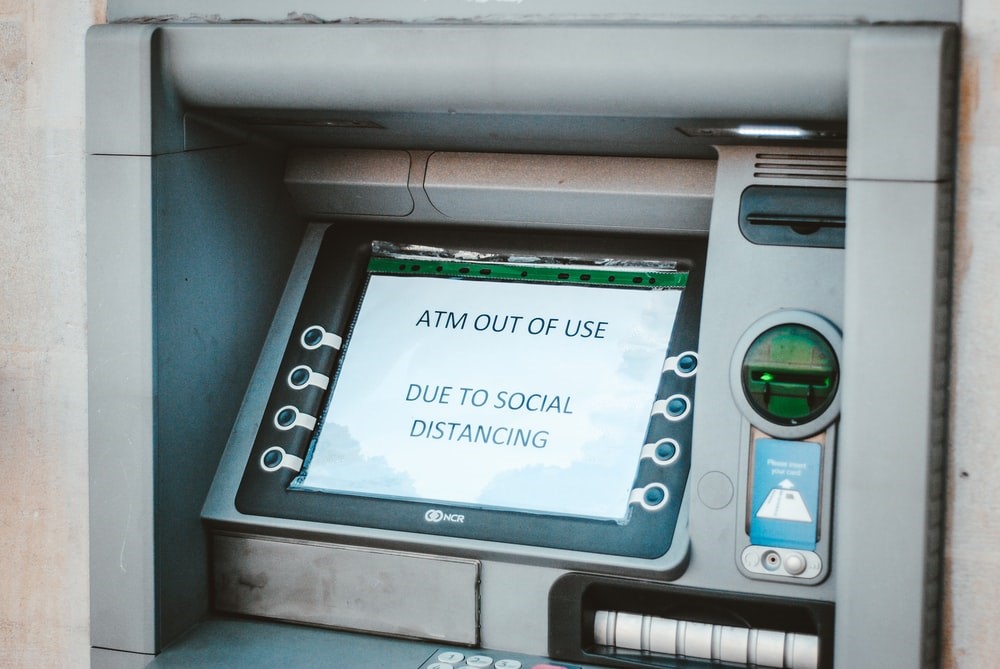Shifting from Disruption to Innovation through FinTech Partnerships in COVID19 pandemic.
4 June 2020
FinTech as an industry is considered a disruptive force when
seen from the perspective of traditional financial institutions, and on the
other hand the old-aged global financial industry is seen as an inevitable
challenge in the path of ambitious and increasingly popular FinTech companies. Although
this notion has led to a mild friction between those two entities, the
developing scenario today is pointing towards mutually beneficial
collaborations and successful partnerships between the digital and physical
finance worlds, especially after COVID19 pandemic.
At the core of these potential partnerships is innovation.
Financial powerhouses and FinTech startups alike are hungry for innovation in
an increasingly demanding world, as consumers come to expect more from their
banks, credit unions and similar institutions in less time than before. This
high demand for faster and more convenient financial services like cashless
payments, instant transactions and much more can be met through a collaborative
environment, as opposed to one suggesting of either entity replacing the other.
Conventional financial institutions are coming to realize
that the way forward is through partnering up with FinTech companies that fill
specific gaps and fulfill specific needs for each of those FIs. Consumers are
increasingly tech-savvy with rising access to connectivity on various devices, and
expectations are at an all-time high when it comes to secure, fast and reliable
access to bank accounts on the go.
Once financial institutions have seen the benefits of having
a FinTech partner and have accepted that working together with them leads to better
positioning in the market, whether a true partnership, a temporary one or
otherwise, a new challenge presents itself: Finding the best FinTech company to
join forces with can be a tedious process in and of itself, and the sheer
amount of FinTech companies available in the industry today makes it even tougher
to find the best fit.
Establishing a partnership in theory is the easy part, and then
come the challenges of implementation and proper goal alignment of the entity
as a whole. The right questions that need to be asked should be based on the
strategic needs of both the institution and its customers, and all opinions should
be considered and consolidated into a short list of Fintech prospects as a
first checkpoint. Financial institutions and FinTech companies could aim to expect
reasonable satisfaction in the beginning of the relationship, and then work
towards achieving a more mutually favorable situation, as the symbiosis between
these players develops into a smooth and successful endeavor.
As the merging of the two industries unfolds across the
global market, competition intensifies and time is of the essence. FinTechs are
usually accustomed to a faster pace of doing things due to their digital
nature, which could prove challenging when compared to the classic finance
industry that relies more on a traditional, slower pace within its strict
regulatory framework and accompanying entities. However banks have also been
exerting more effort and investing more in the digital sector of their
operations lately, and customers are getting more and better digital products
and services from their local banks. This trend could facilitate the
partnership with FinTech companies because the growth of financial
institutions’ digital presence means that the gap is narrowing, and that the union
of the two will be more seamless when compared to FIs that haven’t ventured
into digital yet.
On the other hand, banks and financial institutions have the
upper hand when it comes to the most prominent advantage; their legacy. FinTech
players have growth as their ultimate challenge, an aspect of FinTech that
several popular e-finance providers are struggling with at different levels,
despite their success. FinTechs need to overcome a fiercely competitive market to
achieve meaningful growth in the first place, and that gets harder when
compared to their traditional counterparts and potential new partners.
Another area where FIs have leverage over FinTech companies
is regulatory compliance with financial authorities’ rules and regulations.
FinTech concepts and ideas might be innovative, but they still need to adhere
to agreed-upon principles by the financial industry, acting as an entry barrier
to the market as well so young FinTechs have to comply to current financial
regulatory policies in order to operate.
So in order to try and minimize the impact of these
fundamental differences, FIs should research thoroughly to find their right
FinTech partner with the right offerings and strategic vision. Several online directories
and resources are available with reviews of FinTech companies and vendors by
financial experts and leading figures of the industry. Institutions can also inquire
at incubators and accelerators that have graduated several FinTech companies from
their programs and get more valuable, hands-on information.
The team behind leading the integration of the FinTech
product or service into the institution’s operations needs to be a highly
competent one, featuring a well-balanced distribution of business representatives,
financial and digital experts to guarantee that all aspects of the core
business are covered and represented. These professionals that drive the first
stage of the implementation will pave the way to the partnership’s roadmap and
ultimately define their progress and achievements, also minimizing risks of
time and money loss during the transformation.
Eventually, processes will align and the common vision will
be made clear. FinTechs will continue to create innovative solutions while gaining
access to a wider customer base, and financial institutions will benefit from
new technologies and communication channels that elevate their operations to
the next level.
The seamless integration of these strengths and weaknesses that both of these industries have is where the partnership will bloom, and considering they are branches of the same tree, the perfect relationship for perpetual success is achievable as we enter the increasingly-digital future of finance.
related articles

Financial Health is What FinTech Should Be Empowering

Can the Middle East Bloom Into A Global FinTech Hub?

Setting Digital Banking Transformation Priorities During a Pandemic

Can Blockchain Technology Affect Banking and FinTech?

The Challenges that FinTech Startups in Emerging Markets need to consider

Four FinTech Elements Affecting the Retail Banking Ecosystem

Regulatory Technology is the Unsung Hero of Digital Transformation

The Impact of IoT on FinTech & Banking

Going Cashless is the new way to go in a Post-Coronavirus Future

Relevance of Scheduling Apps for Bank Appointments is Skyrocketing

How is Banking Changing with COVID-19?

Customer Service Transformation has become a must in a Digital World

The Opportunities and Threats of FinTech during COVID-19

The Impact of Coronavirus on the Financial Sector

FinTech’s Critical Role in the Battle Against the Coronavirus

6 Benefits of Blockchain Technology in Finance

Digital Banking vs Physical Branches: Competition Not Mandatory

Central Bank of Egypt Holds Third Roundtable Discussion for FinTech in Egypt

Five Technologies Expected to Reshape FinTech in 2020
.jpg)
Is Authentication by Facial Recognition an Ideal Method to Combat Financial Fraud?


 0
0
 3.1k
3.1k 



Comments